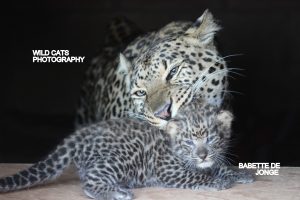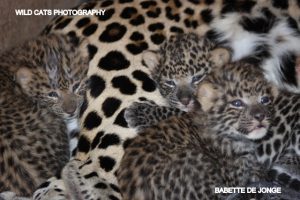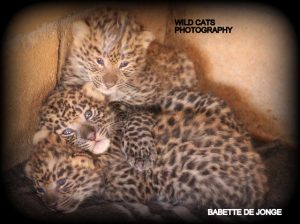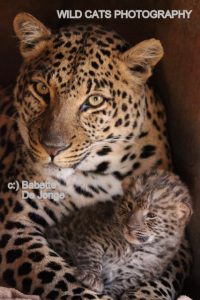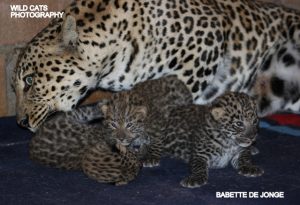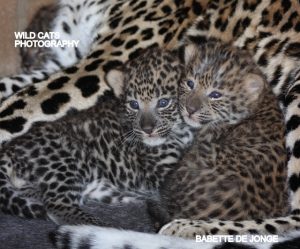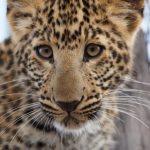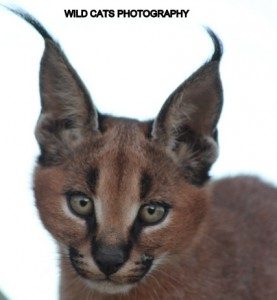Re-wilding program has started under the name Phoenix-four
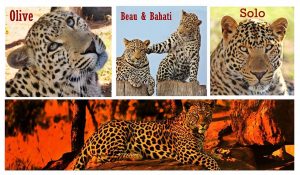
When Babette de Jonge started her non-profit foundation Wild Cats World in June 2010, she already had her mind set on starting a special leopard project.
There are lots of cheetah, tiger and even lion conservation projects, creating awareness for the bad situation of these species in the wild, but somehow people always seem to have the strange and wrong idea that the leopard numbers are still safe. Even though there never really was a leopard census, neither in Africa, nor in Asia. Also leopards are being killed in both countries on a daily basis. In India up till 2011 there were 356 leopards killed in 365 days, but in 2012 these numbers seem to be increasing.
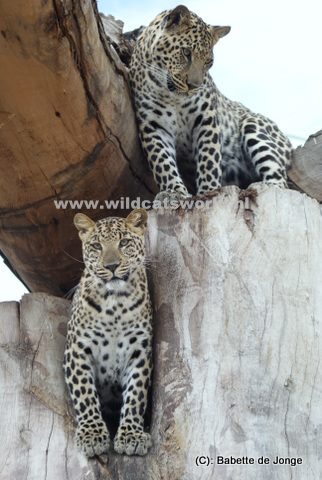
If the killing of leopards continues in this pace, the leopard will get extinct long before tiger or cheetah. Little what we can do, has to be done. Today, as tomorrow might be too late!
So finally on wednesday 20th of June 2012 the WCW leopard project if officially opened at Eastern Cape/South Africa. Apart from creating awareness & doing lots of educational and research projects, like we already did with WCW, the focus of the project will now primarily be to protect leopard from poaching, poisoning, trapping, and over-hunting. The two ambassadorleopards of our project, Felix and Feline, will meet the people (NO interaction with them by tourists/volunteers though!) and they have the important job to convince them they are loveable, clever and gorgeous cats, that deserve respect and a chance for the wild species to survive.
Needless to say, that the leopards we are using as ambassador leopards will be kept in the best conditions. The best of welfare, lots of space and natural surroundings will be provided for them. They can live a protected but wild life.
Please everybody, sign this petition which we will hand over to the government of India, and help us to try and save the wild leopard population in India. It will only take a minute, but it will maybe last a lifetime!
Please also look at the website of the leopard project in India for useful information.
In the meantime we hope to get volunteers for our project, mainly from Indian NGO’s to help us spread our word. The Indian villagers, and Officials, must be educated. There is a way to live together with leopards, or other predators, but it is up to the human behaviour if this will work out. Here’s an important list of do’s and don’ts. If everybody can share this, and especially will hand this over to the people involved, as they are the ones who have to adapt to a better life close to leopards. And it is possible.
7th Nov 2013, Wild Cats World Founder, Babette de Jonge, on Wildtime Radio UK
If you have a (long) moment please take a seat and take a listen to this 1-hour radio-interview with the founder of Wild Cats World/Babette de Jonge, on Wildtime Radio UK, about the leopard conservationprojects and the threat to all wild cats species!
Leopards Conservation – the ultimate video
Leopards are the ultimate cats. They are the most feline, the most intelligent, the most dangerous, and, until recently, one of the least understood. They hunt from South Africa to Siberia, from Arabia to Sri Lanka, and are the most widespread predators of their size on land. A leopard is a cat that walks by itself, unseen, secretive, and malevolent. Leopards are the beautiful killers that live in the shadows. This film will accumulate the evidence and put together a psychological profile of this extraordinarily cunning cat. From the Middle East and North Africa to the island of Sri Lanka, we’ll learn how these cats rarely move without a completely pre-meditated strategy.
A list of practical methods to better live with the leopards so we minimise danger to ourselves
Credits to MSGNP for these guidelines.
• Recognise that leopards are resident in the area and mere sightings do not translate into danger.
• Leopards do not recognise our maps of forest, national park, colony etc. However, they are sensitive and clever enough to avoid contact with people and in fact do their best to avoid us.
• Be alert after dark (when leopards are active), especially ensuring that children are supervised by an adult if they are outdoor. You could also put on the music on the mobile phone so that it knows that the creature walking along is a human which it goes out of its way to avoid.
• Do not move about alone after dark and ensure you have a companion. This will alert any leopard nearby and reduce any chance of you being mistaken for prey animal.
• If a leopard is sighted, give it right of way and allow it move off peacefully. Any loud actions or aggressive posturing may cause it to react with alarm (and panic), leading to unintended consequences.
• If a leopard is sighted in in the area, do not form a crowd around it. Crowds invariably get excited and the mob behavior will cause the animal to panic and it might harm someone in its bid to escape. The forest department is responsible for managing the interactions between people and leopards but have little control over the movements of individual wild leopards.
• The only long term solution to avoid leopards within your colony or adjoining it is to ensure that garbage is disposed off well and that no feral dogs are present. If your colony has a dog then ensure its kennel is far away from the building because leopards are attracted to barking dogs from even 400 m away so they will come but once they know that the particular dog is well protected, they will decrease their incursions.
Finally leopards do not recognise our man-made park boundaries and they will come outside the park—they always have. It is in our hands to reduce that attraction for them and it is in our hands to put pressure on the civic authorities to ensure better waste collection. The reduction in garbage which attracts dogs and pigs and the proper disposal of organic waste (including waste from butcher shops and tabelas in Aarey) can reduce leopard presence around your buildings.
Please donate so that we can carry on with this important project!
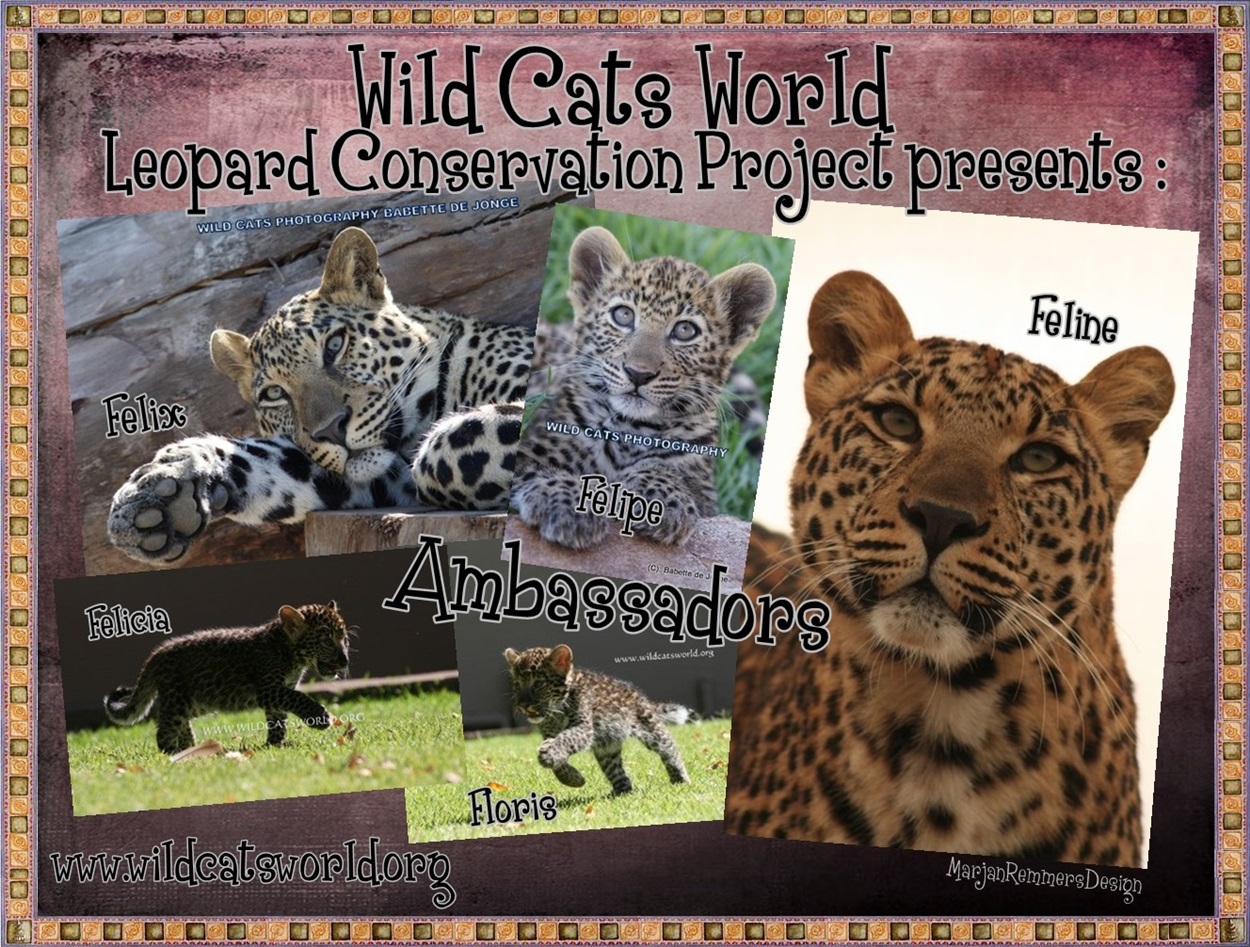
Update June 30, 2017:
An official NO to leopard conservation in South Africa.
The start is there of the ultimate book about our Pride – the leap of leopards in our conservation project . Will take some time for it to appear on the bookshelves, but this has to be the document – the final bit of leopard conservation.
Last week there was a meeting in Port Elizabeth of the DEDEAT Officials, deciding about leopard conservation and whether or not granting permits to the amazing Private Game Reserves in the Eastern Cape (Amakhala, Kariega, Samwhari) who all had a interest in releasing leopards…..our leopards. Some officials with no knowledge decided NOT to grant permits. They just grant permits for captive leopards, capturing and relocating wild leopards on farms, and soon partly on hunting of leopards again. Captive cheetah and lions will never be released either was confirmed, but that was already decided. Since we are the only serious conservation project with leopards, wanting to release and contribute to the leopards without exploiting or hunting them, this was a road without any footprints just yet, but now it is also a NO to the leopard.
I discussed with leopard specialists in other provinces and they also confirmed the situation for the leopard in South Africa is very bad. Releasing captive cats no matter how much ready they are, is also there not an option, as even the wild leopard has a problem to survive everywhere at this point. Referring to Indonesia, the same situation there, not even possible to relocate wild (problem) leopards….all ending up in a sanctuary.
So, for us a very bad situation….we want to do good but aren’t allowed to. So, for us and the leopard a lot will change. This book is mainly covering our whole project from A to Z, with sadly not the outcome we hoped for. We worked so hard on it, and there was a bit of hope, but different turn of events sadly.
Of course the leopard ambassadors will have a life long home with us in our sanctuary. The hope is to one day being able to make a camp of 20-100 HA, but then help from others is needed big time. A place not a problem but just the funds to make it happen. We want so much more for the leopards but sadly Officials decided it is better to have them extinct in near future. So the sanctuary and awareness/education part is the only thing left for us as leopard ‘conservation’ project…..think we have to castrate the males too, in order to keep the Pride a happy permanent life together. Sad, sad, sad……..But then again the same Officials decided to grant permits to trade in lionbones, a yes to more exploit of (captive) lions. How much worse can it get???
These are two reasons for declining permits to the Reserves:
1) they do not want to dilute the eastern cape gene pool with non -Eastern cape genetics. This they will not change their mind on. TRAGIC PART IS THERE’S NO SUCH THING AS EASTERN CAPE GENE POOL!!!!!!!! THE AFRICAN LEOPARD IN THE OLD DAYS COULD ROAM FREELY EVERYWHERE IN AFRICA.
2) they do not want to set a precedent which will allow any Private reserve to apply for import permits for non-Eastern cape (captive) leopards.
They can be released after sterilizing them so they cannot breed, but this is not an ethical option in conservation, and dangerous too in wild situation as for change in behaviour. Of course with the smaller cats like serval, African wildcat and black footed cats the option of releasing is still there!!!! So the focus is on that as for true conservation!!
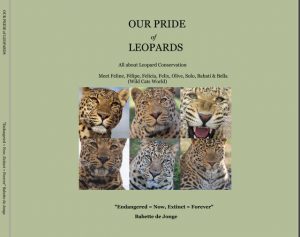
Update February 18, 2018:
Progress Leopard Conservation Project
The info on this sign is shared at our S.A. conservation project, to avoid misinterpreting, unintentionally or intentionally, the essential conservation work we do for the leopard species (Panthera Pardus), the South African leopard, but also our support to the Javan Leopard, Indian Leopard, Nepal Leopard but also other subspecies, if ngo’s need our support in knowledge or funds.
As for the African leopard (Panthera pardus pardus) we are at the bound of the next big step, which will lead us to the ultimate mission: a donation of fresh blood back to the wild.
The four young leopards (Olive, Solo, Beau and Bahati) who were born and raised successfully at our place are moving out shortly to another Province, to a huge re-wildings camp (details follow shortly), and after the right period of time they will as it looks now move to a huge boma part of a wonderful National Park who showed interest in the ultimate release.
Of course we had a bit of a setback when Officials in the Eastern Cape didn’t grant permits for an earlier release to the Private Game Reserves, Amakhala, Kariega and Samwhari, who wanted to release (our) leopards, which also left us with full house at our sanctuary, because the youngsters have grown up now, and difficult to decide where to start looking for a new forever home or better possibility for a release, and now a new door opened for us and our leopards, and an even better one!!
Everything takes time, as some people don’t realize, and of course the close bond with the adult leopards, of which the females also when they gave birth, is with some a matter of dispute, and envy, but we had a vision and we are coming closer. So watch this space for more info to come in the (near) future.
Little Chui, proud son of Felicia and Felix, born in December 2017 (see photo) has now the important job to tease the remaining adults, so that they don’t have to miss their older ‘kids’ too much.
